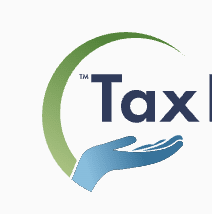
Although not everyone is entitled to a refund, those who are can get thousands of dollars deposited into their accounts. Your refund amount can vary depending on a few factors, including the state where you live and its individual tax policies.
This is especially pertinent to states with high tax burdens, such as California, where the best tax relief services can make a big difference in your refund amount. Let’s look at which states have the biggest average tax returns, plus why it’s vital to understand your state’s taxation system.
Key Factors That Influence Tax Refund Sizes
- Income levels: Generally, states with higher average incomes may see larger tax refunds because they tend to pay more yearly taxes. However, this isn't the only factor; higher income doesn't guarantee a larger refund.
- Adjusted gross income (AGI): Your AGI is your total income minus certain deductions. A lower AGI can lead to larger refunds, as it can qualify you for various tax credits and deductions.
- State tax policies: Each state has its own unique tax system, including differing income tax rates, property taxes, sales taxes, deductions, and credits. Some states have progressive tax systems where higher earners pay higher rates, while others have flat tax rates.
- Filing habits: The timeliness and accuracy of tax filings can impact refunds. Early filers who are thorough and accurate are more likely to receive their refunds faster.
- Federal tax withholding: Over-withholding from your paycheck during the year can lead to a larger refund. However, this means less access to that money during the year, giving the government an interest-free loan.

Top States With the Largest Tax Refunds
Here are the top five states for federal tax refunds in 2023, the most recent year for which the IRS has published data.
| State/District | Average Refund |
|---|---|
| District of Columbia | $3,785.39 |
| Texas | $3,455.82 |
| Florida | $3,307.55 |
| Nevada | $3,266.18 |
| Louisiana | $3,222.62 |
What Makes These States Different?
Location really does matter when it comes to tax refunds. Here's why some states see bigger checks than others:
- Income and tax rates: Higher-earning states often see larger refunds since residents pay more in taxes throughout the year. Additionally, states without income tax, like Florida and Nevada, can affect overall tax burdens and refund amounts.
- State-specific tax benefits: Each state has its own set of tax breaks and benefits. Some offer special credits for homeowners, while others provide incentives for things like energy-efficient home improvements.
- Better tax help: Some states make it easier for residents to get good tax advice and find all the credits they qualify for. Many people in these states also choose to have extra money taken from their paychecks, trading smaller paychecks for a bigger refund at tax time.
- Interstate tax agreements: If you cross state lines for work, special agreements between states might mean you only need to file taxes in one place.
Which State Had the Smallest Average Refund?
The average federal tax return in 2024 was $3,004, up 0.9% from 2023, which saw the average refund at $2,977. However, in the states with the lowest average tax refunds, these numbers are much lower.
Here are the five states with the lowest average tax refunds in 2023:
| State | Average Refund |
|---|---|
| Maine | $2,466.73 |
| Wisconsin | $2,551.25 |
| Vermont | $2,570.51 |
| Oregon | $2,580.89 |
| Montana | $2,636.19 |
Understanding Lower Refund States
A smaller average refund doesn't necessarily indicate a negative financial situation. In fact, these states share some interesting characteristics:
- Smart withholding practices: Residents in these states often adjust their withholdings more accurately, preferring steady paychecks over large refunds.
- Different tax structures: These states typically have more balanced tax systems, with some like Oregon offering unique tax benefits that reduce the overall tax burden during the year. Many have robust state-level deductions that help residents keep more money upfront.
- Economic and lifestyle factors: These states typically have more predictable income patterns: stable year-round employment, public sector workers, retirees with fixed incomes, and small business owners making regular tax payments.
Average Federal Tax Refund, Ranked by State
| State/District | Average refund |
|---|---|
| Alabama | $3,020.04 |
| Alaska | $2,858.28 |
| Arizona | $2,905.60 |
| Arkansas | $2,875.66 |
| California | $3,164.15 |
| Colorado | $2,852.25 |
| Connecticut | $3,113.39 |
| Delaware | $2,813.72 |
| District of Columbia | $3,785.39 |
| Florida | $3,307.55 |
| Georgia | $3,101.31 |
| Hawaii | $2,815.71 |
| Idaho | $2,867.83 |
| Illinois | $3,037.36 |
| Indiana | $2,756.45 |
| Iowa | $2,719.95 |
| Kansas | $2,761.37 |
| Kentucky | $2,694.89 |
| Louisiana | $3,222.62 |
| Maine | $2,466.73 |
| Maryland | $2,995.97 |
| Massachusetts | $3,021.96 |
| Michigan | $2,782.71 |
| Minnesota | $2,637.35 |
| Mississippi | $3,028.50 |
| Missouri | $2,752.52 |
| Montana | $2,636.19 |
| Nebraska | $2,717.25 |
| Nevada | $3,266.18 |
| New Hampshire | $2,852.41 |
| New Jersey | $3,068.88 |
| New Mexico | $2,707.88 |
| New York | $3,036.98 |
| North Carolina | $2,766.17 |
| North Dakota | $2,811.57 |
| Ohio | $2,646.23 |
| Oklahoma | $3,114.02 |
| Oregon | $2,580.89 |
| Pennsylvania | $2,756.83 |
| Rhode Island | $2,668.22 |
| South Carolina | $2,710.46 |
| South Dakota | $2,846.06 |
| Tennessee | $2,990.24 |
| Texas | $3,455.82 |
| Utah | $3,006.36 |
| Vermont | $2,570.51 |
| Virginia | $2,924.34 |
| Washington | $3,040.28 |
| West Virginia | $2,644.02 |
| Wisconsin | $2,551.25 |
| Wyoming | $3,156.45 |
Which Income Bracket Got the Biggest Refund?
The IRS reports tax refund data across 10 different income categories rather than traditional tax brackets. In 2022, taxpayers earning over $1 million received the highest average refund at $50,074—significantly more than any other income group.
Average Refund by Income
| Income Level | Average Refund |
|---|---|
| $1 to $9,999 | $1,027.00 |
| $10,000 to $24,999 | $2,726.78 |
| $25,000 to $49,999 | $2,638.34 |
| $50,000 to $74,999 | $2,515.52 |
| $75,000 to $99,999 | $3,093.79 |
| $100,000 to $199,999 | $3,950.81 |
| $200,000 to $499,999 | $7,211.25 |
| $500,000 to $999,999 | $16,118.27 |
| $1,000,000 or more | $50,074.85 |
How to Maximize Your Tax Refund
Getting the most out of your tax refund involves careful planning and accurate filing. Here are some tips to help you maximize your return:
- Accurate filing: Make sure your tax return is accurate by double checking information and documentation. Errors can lead to delays, or missed opportunities for credits and deductions.
- Take advantage of free filing: If your AGI is under $84,000, you can get free guided tax preparation from IRS partners. Additionally, those who live in 25 participating states can use the IRS's Direct File to file for free on their website.
- Review tax withholdings: Regularly review your tax withholdings, especially if your circumstances change (e.g., marriage, new baby, etc.). Adjust your W-4 form as needed using the IRS’s tax withholding estimator to fine-tune your withholdings.
- Record keeping: Keep good records throughout the year. Track all deductible expenses, keep all tax-related receipts, and organize your documents to make tax time easier.
- Explore deductions and credits: Don't miss out on potential deductions and tax credits you may be eligible for, such as the Earned Income Tax Credit (EITC), Child Tax Credit, and deductions for charitable contributions, and educational expenses.
- Avoid tax scams: Be cautious of scams. Never share sensitive information with unknown sources or over the phone, and be sure to use reputable tax preparers.
- Professional help: If you are unsure of how to prepare your taxes, it's always advisable to consult a professional.
State-Specific Tax Resources
For more information on specific tax credits and deductions, you can check your state’s tax agency website. They often have detailed guides and forms to make the process easier.
Check your state’s website for more information on property tax rebates, energy credits, and any other state-specific tax advantages you may qualify for.
Pro tip: Review your tax withholdings annually, especially after major life changes like marriage or having a child. This helps ensure you're not paying too much or too little throughout the year.
Conclusion
Don't let your state's average refund define your tax outcome. Take advantage of IRS free filing programs if you qualify, or invest in professional tax help through a CPA or our recommended tax relief service providers.
The right guidance can help you identify every eligible deduction and credit – potentially boosting your refund regardless of where you live.







